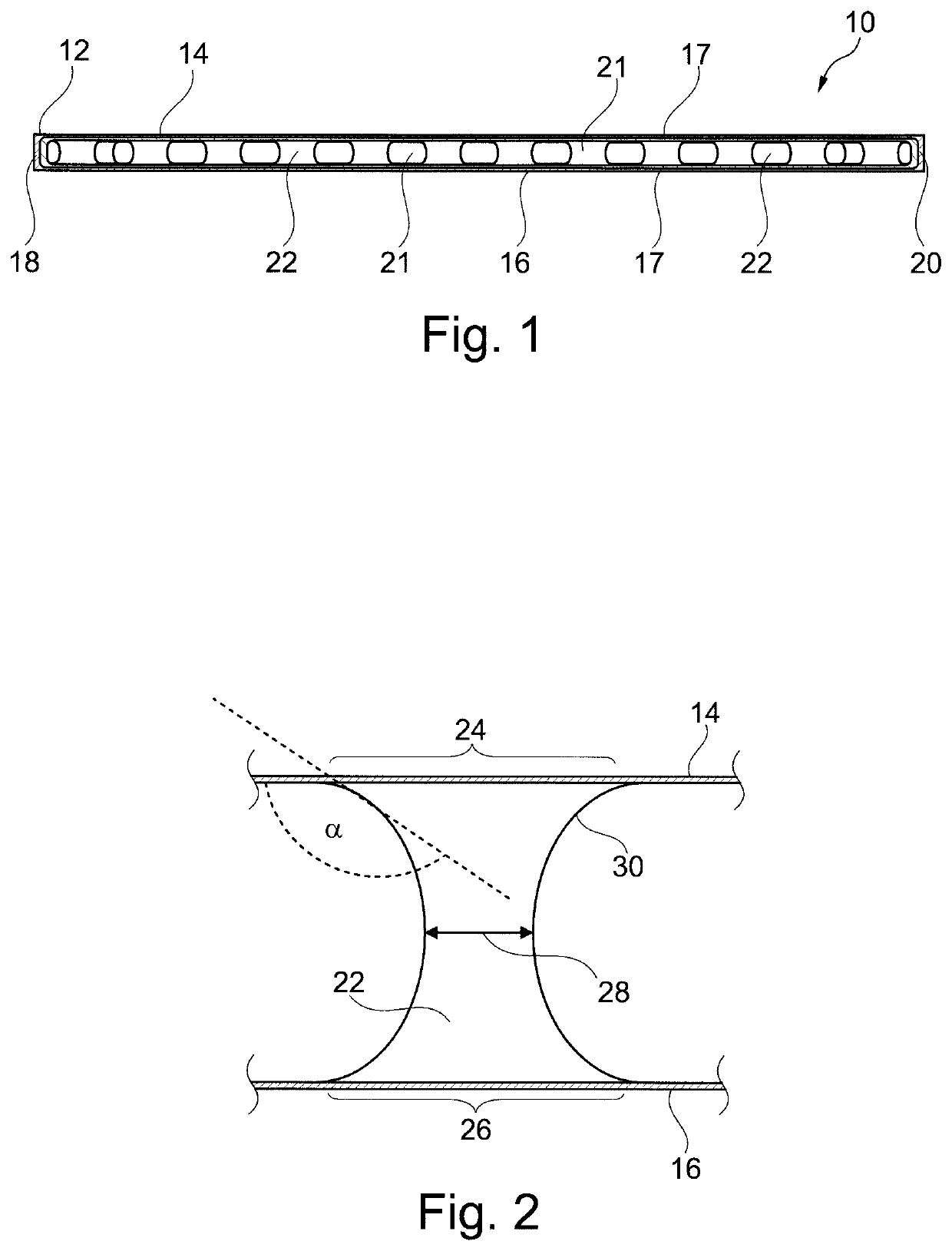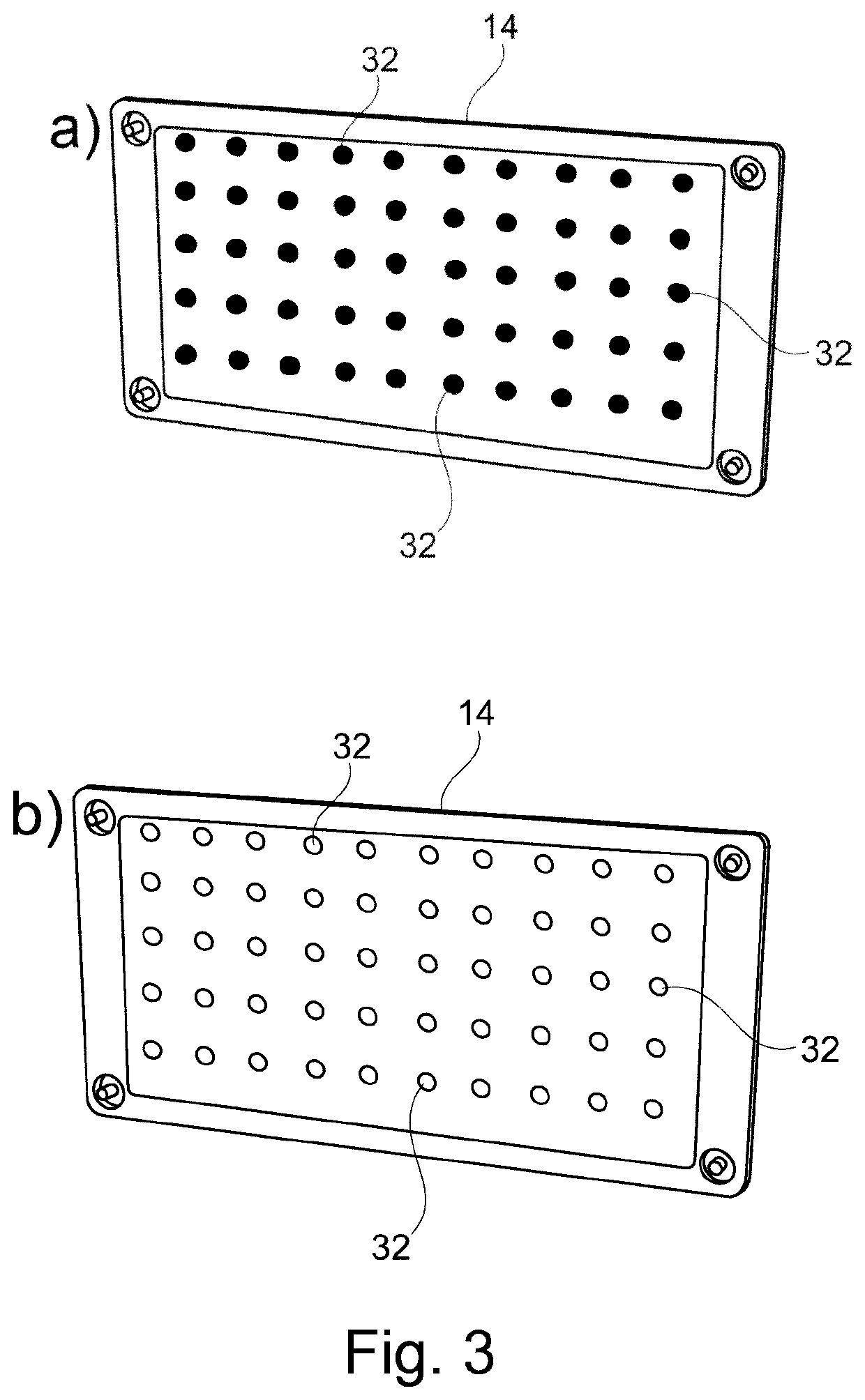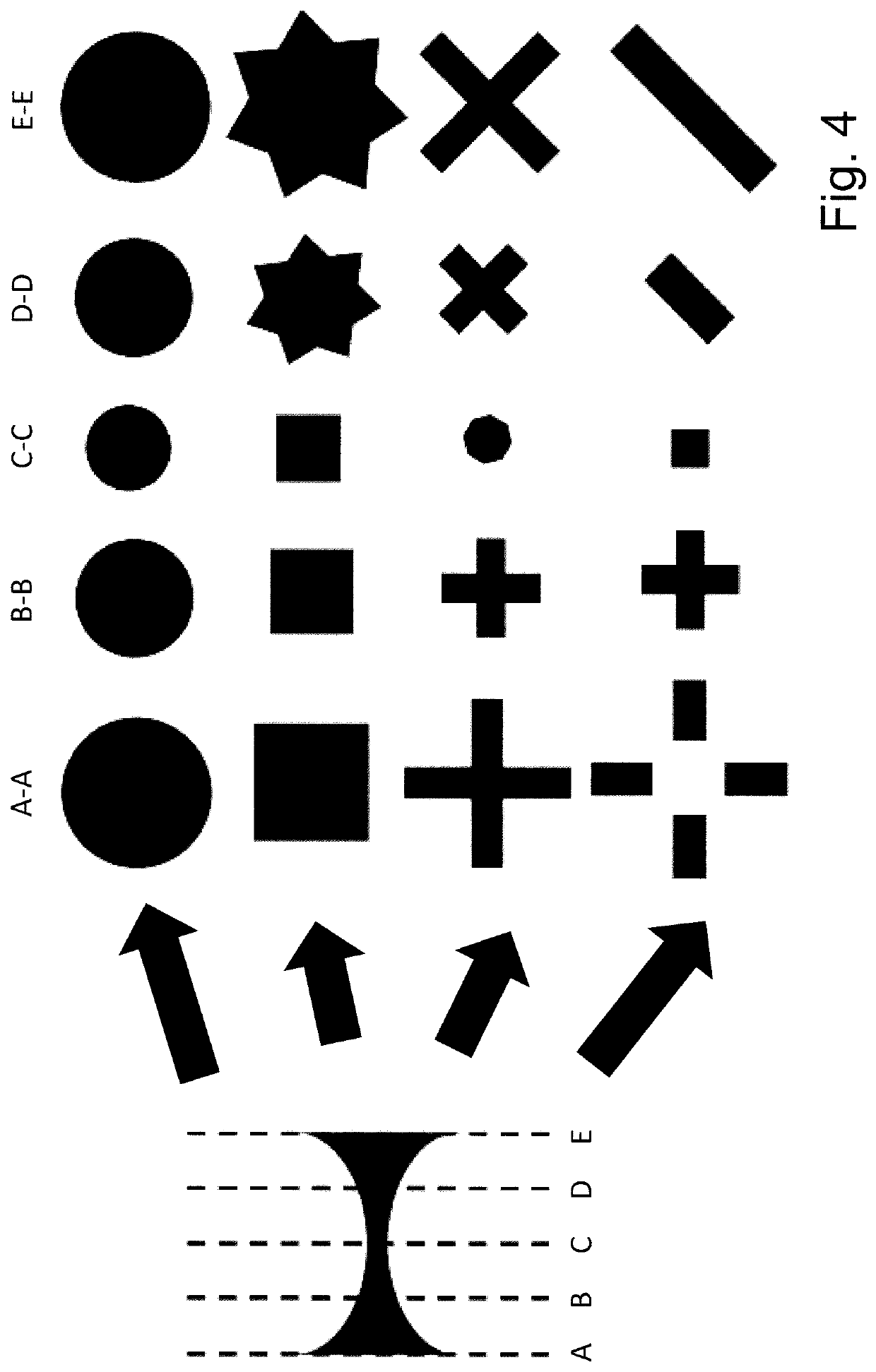Vapor chamber for cooling an electronic component
a technology for electronic components and vapor chambers, which is applied in the direction of reinforcement means, spacing means, lighting and heating apparatus, etc., can solve the problems of limited heat sinks, advanced cooling concepts, and high heat loss density, so as to improve the working liquid flow to the evaporator, reduce the stability of the pillars, and improve the effect of working liquid flow
- Summary
- Abstract
- Description
- Claims
- Application Information
AI Technical Summary
Benefits of technology
Problems solved by technology
Method used
Image
Examples
Embodiment Construction
[0062]FIG. 1 shows a vapor chamber 10 which is particularly suited for cooling an electronic device, such as a power semiconductor module, not shown as such.
[0063]The vapor chamber 10 comprises casing 12 which is sealed to the outside so that a working fluid which is included in the casing 12 is not able to leave the casing 12 either in liquid or in gaseous form. The casing 12 comprises two main walls. The two main walls comprise an evaporator wall 14 and a condenser wall 16. The evaporator wall 14 is configured for coming in contact with a device to be cooled, such as with a baseplate of a power semiconductor module. The condenser wall 16 is configured for being in an environment having a comparably cooler temperature. For example, the condenser wall 16 is provided at its outside with air fins.
[0064]The two main walls, i.e. the evaporator wall 14 and the condenser wall 16, are connected by side connections 18, 20 to form a sealed volume 21 inside the two main walls and the side con...
PUM
 Login to View More
Login to View More Abstract
Description
Claims
Application Information
 Login to View More
Login to View More - R&D
- Intellectual Property
- Life Sciences
- Materials
- Tech Scout
- Unparalleled Data Quality
- Higher Quality Content
- 60% Fewer Hallucinations
Browse by: Latest US Patents, China's latest patents, Technical Efficacy Thesaurus, Application Domain, Technology Topic, Popular Technical Reports.
© 2025 PatSnap. All rights reserved.Legal|Privacy policy|Modern Slavery Act Transparency Statement|Sitemap|About US| Contact US: help@patsnap.com



